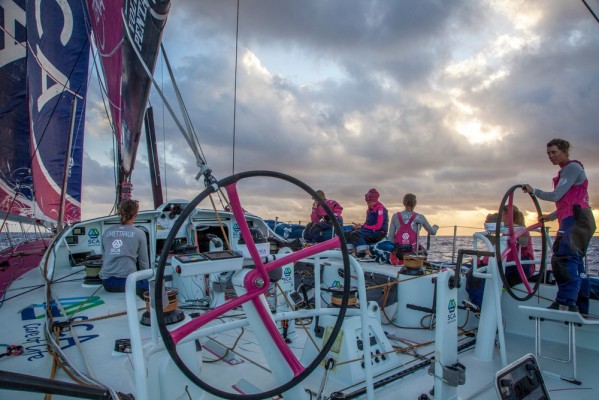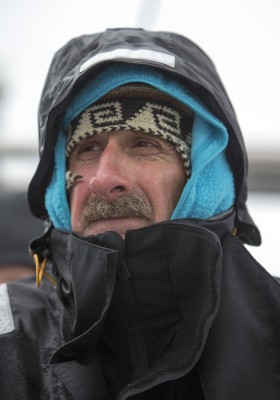Taking a deep breath and donning a hard hat, Skip Novak asks why is it that all-female crews do so badly and what is the solution?
Never one to avoid what will inevitably put people’s noses out of joint, I’m going to comment on Team SCA’s less than impressive performance in the Volvo Ocean Race.
We know that the organisers had decided to grant the female team three extra crew, which I would assume was a concession to strength and endurance issues. So this is a clear acknowledgement of a disparity between the genders.
Then we know for a fact that Team SCA’s boat was the first off the blocks and the team has had the most time on the water training. We must also assume that this team has the best female sailors money can buy. Indeed, their inshore sailing skills are beyond question, as seen from stellar results in the in-port races.
On the Volvo PR material it is stated: ‘The entry of the all-female team is no coincidence given that the new boat design puts less of a premium on physical strength and means an all-female team can be just as competitive as any other professional team.’
If all three of these facts hold water, then there is no harm in asking the question: What is happening? If a level playing field was created by the organisers and no expense spared in the crew selection and the training, I wonder if there is more at play here.
Dare I offer the conclusion that women are inferior to men offshore? How can this be when we have seen the likes of Ellen Macarthur and Florence Arthaud, you say. Indeed there have been many female single-handers, mainly French and British, that have impressed.
Is single-handing as intense as a fully crewed race where there is no respite from your shipmates? It is no secret that peer pressure on board can be dramatic. It must also be accepted that going 100 per cent all time while single-handing is impossible and throttling back at times to recoup is all part of that equation.
Catching your breath is not the case in today’s Volvo. If you are female and feeling indignant by this stage, note that there is not one female crew member in any of the other entries. Does that tell you something?
Well, carrying on in this discussion will only land me in hotter water than I am already in for bringing up the subject in the first place. So I will let the reader ponder these things while they cool down.
In the meantime, I will offer a solution that can possibly eliminate any further discussion, and one that I am sure many people have contemplated and even suggested to the organisers if they haven’t thought of it themselves. Simply, crews comprised of 50 per cent guys and 50 per cent girls, which is a good ratio when you consider world population demographics and a lot else, including procreation for that matter. It takes two to tango, right?
This simple and elegant solution will once and for all quench these awkward comparisons between the genders in fully crewed offshore racing. It’s a ‚we’re all in it together’ concept. There is another benefit here in that having more female sailors involved by a simple rule requirement will bring more female sailors up to speed in offshore sailing. And, from the human point of view, imagine the great stories that would unfold both on and off the water!
It has been a long passage for women making their mark offshore. I am thinking of Claire Francis skippering ADC Accutrac in the 1977/78 Whitbread, Tracy Edwards’s ground-breaking all-female crew in the Whitbread of 1989/90, but then we see the all-female team of Heineken in 1993/94 coming 9th out of a ten-boat fleet, EF Education in 1997/98 last and in 2001/02 Amer Sports Too also last.
Might persisting in the all-female crew concept for this pre-eminent event be a step backwards?
If you see me on the dock at the finish I will be the one wearing a hard hat and body armour.
Skip Novak is a columnist and regular contributor to Yachting World, and author of our acclaimed Storm Sailing Series, which you can also find on our website. He was born in Chicago in 1952 and started sailing at an early age. He has raced in four Whitbread Round the World races and in 2001 co-skippered the 108ft catamaran Innovation in The Race round the world in 65 days, an event in which his future wife, Elena, also raced. In 1987 he built the steel cutter Pelagic and has since spent 26 seasons in Tierra del Fuego, South Georgia and Antarctica, sailing and mountaineering.





